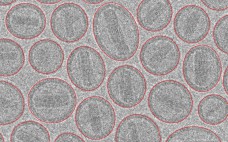Micro-Flow Imagingâ„¢ (MFI) easily detects particle size and morphology on a wide range of particle contaminants. And when you add the Bot 1 Autosampler to your MFI 5000 Series system, you’ve got the automated go-to method of choice for particle analysis today. Together, this combination lets you quickly screen for any changes in levels of particle contaminants like protein aggregates and silicone oil in your biopharmaceutical formulation. Highly concentrated protein solutions can be a little trickier to analyze with other…
Thursday, April 21, 2016 Daily Archives
Objective characterization of liposomal drug delivery platforms: Using cryoTEM and designated image analysis software
Quality-critical attributes particular to liposome drug products include physicochemical properties such as particle size distribution and morphology, e.g. their overall shape. Such properties will influence the biological activity and bio-distribution of liposomal-based drug and gene delivery platforms. Analytical techniques that provide objective and reliable information on liposome particle characteristics can thus help to improve product development processes and shorten the time to securing their final quality. Cryo-transmission electron microscopy (cryoTEM) combined with image analysis using proprietary Vironova Analyzing Software (VAS)…
Understanding Single-Pass Tangential Flow Filtration and the New Era of Bioprocessing
Learn how single-pass tangential flow filtration (SPTFF) technology is revolutionizing current and future bioprocessing platforms with its implementations in biotech, vaccine and plasma industries. Adopting SPTFF at process development (PD), pilot, clinical and commercial manufacturing scales has major advantages over conventional approaches. Key benefits include flexible manufacturing, reduced processing volumes, high product recoveries and increased yield, as well as major savings in capital expenditures. SPTFF also enables disposable and/or single-use technology utilization.
CHO Cell Cultivation in the Allegroâ„¢ XRS 20 Bioreactor System with Working Volumes from 2 to 25 L
The Allegroâ„¢ XRS 20 bioreactor system is a single-use bioreactor technology designed for applications ranging from general life sciences research to seed train operations, and as a final stage reactor for small scale commercial production. In practice, many installed systems have been implemented into seed train and small scale GMP production operations, where operational simplicity and consistent results are key benefits for industrial users. In the application note summarized here, we report efforts to enhance the capabilities of the…



